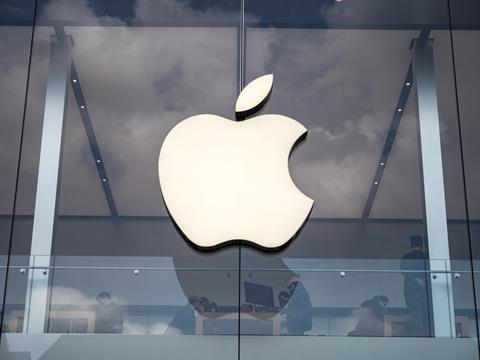
Apple has designed downsized, fibre-based, label-free packaging for its new Apple Watch line and is set to increase its delivery via ‘low-carbon’ transportation – aspiring to phase out plastics and decarbonise its operations by 2025 and 2030, respectively.
According to the company, over 96% of its overall product packaging is made from recycled and responsibly sourced wood fibre. It has partnered with The Conservation Fund and WWF in a bid to optimise the management of over one million acres of working forests in the US and China; these are said to have generated enough responsibly sourced fibre to match the new wood fibre used in Apple packaging last year.
Components such as trays, plastic wrap, and foam cushioning have also been redesigned with the aim of improving their recyclability, as their new fibre-based materials are said to break down in mixed-paper recycling streams.
Upon the announcement of the new Apple Watch lineup – claiming to be the company’s first carbon-neutral products and offer individual emission reductions of 75% through their design and use of clean energy – Apple has revealed that its packaging will be made entirely from fibre. So, too, is the packaging for its iPhone 15 model said to be over 99% fibre-based.
Both developments expect to bring the company closer to its goal of achieving plastic-free packaging by 2023. Nevertheless, it clarifies that its US retail packaging is broken down by weight, and adhesives, inks, and coatings are excluded from the calculation of both packaging weight and plastic content.
In further efforts to reduce both plastic waste and emissions, Apple has developed a custom, high-resolution printer that can print directly onto the back of its boxes. Negating the need to attach labels to product packaging hopes to avoid over 300 metric tons of plastic and 3700 metric tons of carbon emissions.
Furthermore, traditional methods of plastic lamination will be replaced with a new overprint varnish said to improve a pack’s recyclability without compromising its aesthetic or sensory quality – a transition that reportedly led to over 1100 metric tons of plastic being avoided in 2022.
At least 50% of the combined weight of its new Apple Watch models, including watches and bands, are set to be shipped from factories using non-air modes of transportation like ocean freight. In turn, the development is anticipated to almost halve the total emissions of products in transit.
New, more compact packaging has also been designed for all Apple Watch Series 9 and SE models. It is anticipated that the smaller shape will enable a 25% increase in devices per shipment and reduce the number of delivery vehicles on the road.
Aiming to become carbon neutral across every product by 2030, Apple says that its global corporate operations have been carbon neutral since 2020. Its Apple 2030 strategy draws upon the science-based target of ending the decade with a 75% reduction in emissions.
Back in June, Walmart announced its own transition into recyclable paper mailers, right-sized cardboard boxes, electric delivery vans, and more – all in an effort to cut down on e-commerce packaging waste and optimise the sustainability of the delivery process.
Amazon has also listed designing for kerbside recycling, rightsizing via machine learning algorithms, and a Ship in Own Container programme amongst its own strategies in the elimination of unnecessary packaging.
If you liked this article, you might also enjoy:
The Lidl approach to packaging sustainability
How did Brazil achieve its 100% aluminium can recycling rate – and can it be replicated in the EU?
Experts have their say on the EU’s Packaging and Packaging Waste Directive revisions
A deep dive into the most important packaging sustainability trends and solutions

















No comments yet